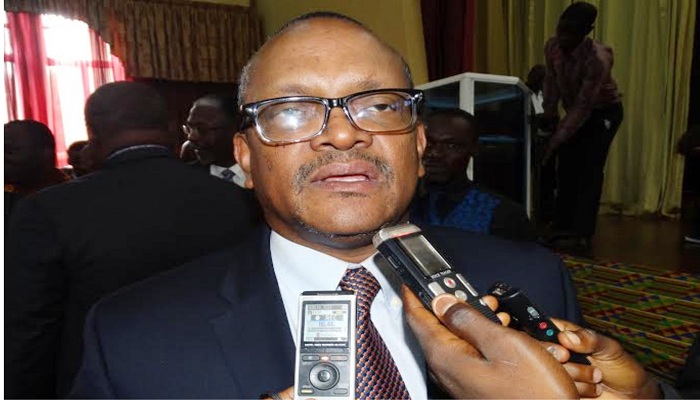Economy suffers global price slump

The Central Bank of Liberia says the global commodity price slump is adversely impacting the growth prospects of the Liberian economy, pointing to prolonged slumps on prices of the country’s two major export commodities – iron ore and rubber.

“The average price of iron ore declined by 67.1 percent, from US$168 per metric ton in 2011 to US$51.4 per metric ton recorded in June 2016”, CBL Executive Governor Milton Alvin Weeks, explained in a press briefing Thursday, July 14, at the Ministry of Information on Capitol Hill.
He said the decline continues to affect production, additional investment and employment level in the iron ore sub-sector, which has correspondingly undermined government’s revenue generating capacity and its foreign exchange earning capacity.
Governor Weeks also noted, global rubber price in recent years has declined significantly, affecting production and the sector’s contribution to national revenue, saying “The average global price of rubber which was US$2.19 per pound in 2011 has declined by more than 68.0 percent to US$0.67 per pound in June, 2016.”
The Governor added that the drawdown of the United Nations Mission in Liberia, which has been major spender in the economy, is affecting micro and medium enterprises and informal workers, many of whom, he said, operate in the service sector catering to the domestic market.
UNMIL has withdrawn from all 15 counties and formally handed over security of the state to the Liberian government on 30 June. He said the drawdown has reduced inflow of US dollars into the economy, thereby putting further pressure on the Liberian dollars.
[bsa_pro_ad_space id=1]
Meanwhile, to help mitigate the current levels of Liberian dollar depreciation for the first half of 2016, the CBL says it intervened in the foreign exchange market, releasing US$14.5million, with US$5.0 million in June alone, which is US$5.0 million lower that the level of intervention during the same period in 2015, which was largely based on policy on reserves accretion.
The bank said on July 6, 2016 it also intervened in the FX market with US$3.0 million against a total demand of US$7.6 million thus, leading to an oversubscription or excess demand of US$4.6 million. Governor Weeks at the same dispersed rumors here that the depreciation of the Liberian dollar is due to the printing and release into the market of additional local currency notes, saying “This assertion is simply not true.”
He said while the CBL is proceeding with its pronounced objective of replacing worn and mutilated currency with newly printed bank notes shortly, to date, no additional currency has been released into the system, and in fact, is working with the fiscal authorities at the Ministry of Finance & Development Planning, engaged in a program of mopping up excess Liberian dollar liquidity using available financial instruments with the aim of reducing the level of excess liquidity.
The Executive Governor however disclosed the imminent release of the new bank notes will be aimed primarily at replacing worn and mutilated notes, while the bank was aware that there are some who are hoarding large quantities of Liberian dollar currency instead of using the banking system.
“Some of these hoarders”, he explains, “have the tendency of using these cash hoards to adversely and artificially impact the exchange rate, actions that have the propensity to be interpreted as economic sabotage. The public is however assured that the CBL is devising strategies to encourage the return of these cash hoards to the banking system.”
The bank has not disclosed how much money is to be printed to replace the mutilated currency notes, but the plenary of the House of Representatives has overwhelmingly endorsed request from the Executive for the printing of additional Liberian banknotes, setting the ceiling at L$55 million.
The CBL said current volatility in the Liberian dollar exchange rate is not unique here, as year-on-year comparative analysis of the exchange rate among selected West African Monetary Zone or WAMZ countries involved with manage float exchange rate shows that at end-June 2016, relative to end-June, 2015, the Liberian dollar depreciated by 10.5 percent. Similarly, the Naira, Leone, Guinea Franc and Dalasi depreciated by 43.3 percent, 28.6 percent, 22.7 percent, and 20.6 percent, respectively. “The depreciation of these currencies is mainly due to declining commodities prices on the global markets”, the Executive Governor added.
Meanwhile, the CBL has assured relevant authorities and the public at large that it will continue to work within its mandate to address issue of volatility, given the available monetary instruments as well as continue collaboration with the Ministry of Finance and Development Planning and other relevant institutions in the area of liquidity management to mitigate the exchange rate depreciation.
By Jonathan Browne




















